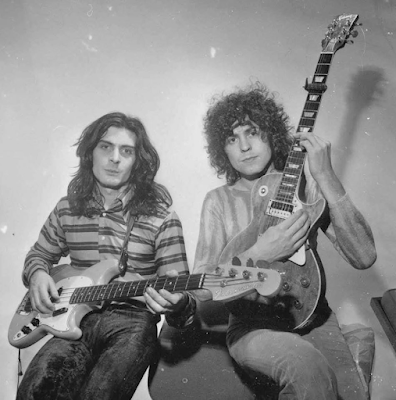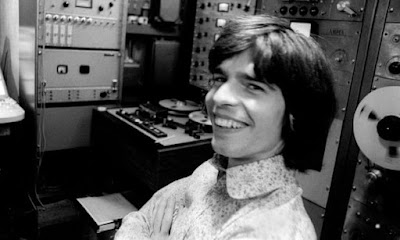20211123
Basic Facts
20211113
Took and Finn
Four tracks from this album, including "Great Horse", were salvaged from spring 1969 sessions for a fourth album with original percussionist Steve Peregrin Took in the wake of the single "King of the Rumbling Spires". These four tracks were overdubbed for release by Finn, Bolan or Visconti or else mixed out completely. "Marc was terrified of paying Steve any royalties," Visconti said. Took was disappointed. "I didn't like the whole scene over A Beard Of Stars," he complained years later. "That was a bummer."
Tony Visconti
20211108
Timings
20211105
20211104
Seed
June Child
Ride A White Swan
Agadinmar
Agadinmar is first referred to in a series of Bolan's assorted notebooks dedicated to a work known as The Children Of Rarn, begun late in 1967 or early 1968. A possible hypothesis is that this was to be a multi-volume work intended for eventual publication, but interviews with Bolan in 1970 suggest that it would more immediately be realised as a multiple album set. Two notebooks have been reproduced in a publication called Krakenmist and they may well come from The Children Of Rarn story, with The Krakenmist being a chapter from one of the volumes, or in expanded form, a volume in its own right.
Dworns
In an interview in America in the early seventies Bolan spoke of his grand conceptual epic Children of Rarn loosely based on his 1968 writings and more properly conceived during 1970 but that had been shelved.
"It's a pretty historic story," he continued, "which was gonna be the album before Electric Warrior, a science-fiction album.
"It's about prehistoric earth before the dinosaurs were heavy creatures," he'd tell anyone who'd listen.
"There were two races of people then, the Peacelings and the Dworns. Now the Dwoms were soulless people, very bestial. Dworn is actually a two-sided word — it's a man, but it's also a machine, which in fact was a prehistoric motorbike which worked on solar power. It has solid ivory wheels, a golden base and two gazelle horns to steer it. It could go about 800mph. Anyway, there were a lot of these creatures called the Lithons ..." And so the saga continued.
"It was going to be our Tommy, our Sgt Pepper, our big rock opera," recalls producer Tony Visconti, who got 15 minutes of the project's key elements down on tape some time during 1971.
Global Glam and Popular Music
In the book Global Glam and Pop Music Alison Blair writes about Marc Bolan. She says of Beard of Stars that it is subtitled "Some Lore from the Books of Agadinmar." and this title
frames the entire album as a repro-duction of fragments from an ancient spiritual work, which is, in itself, Bolan's own invention. The "existence" of this fictional work, then, sets up an entirely Bolan-created fantasy world. The inner sleeve of the record features a photograph of Bolan's own statuette of the Greek god Pan and is dedicated to "the Priests of Peace, all the Shepherds and Horse Lords and my Imperial Lore Liege - the King of the Rumbling Spires." Throughout, the album features references to the sun and moon, the woodlands, the earth, mountains, sea, wind, stars, and sky and includes Bolan's own mythical creation, the "Dworn" (a fighting machine mentioned in the song "Dragon's Ear"). The Dworn, the sleeve notes explain, is a "machinery of war, a bronze frame with wheels of white ivory and horns of a gazelle for steering, so sayeth Agadinmar," Bolan's own fantasy invention in a narrative of good versus evil, which is, as [Fredric] Jameson notes, a trope of the fantasy genre that reflects (in a particularly escapist way) the ideological struggles of the present.












